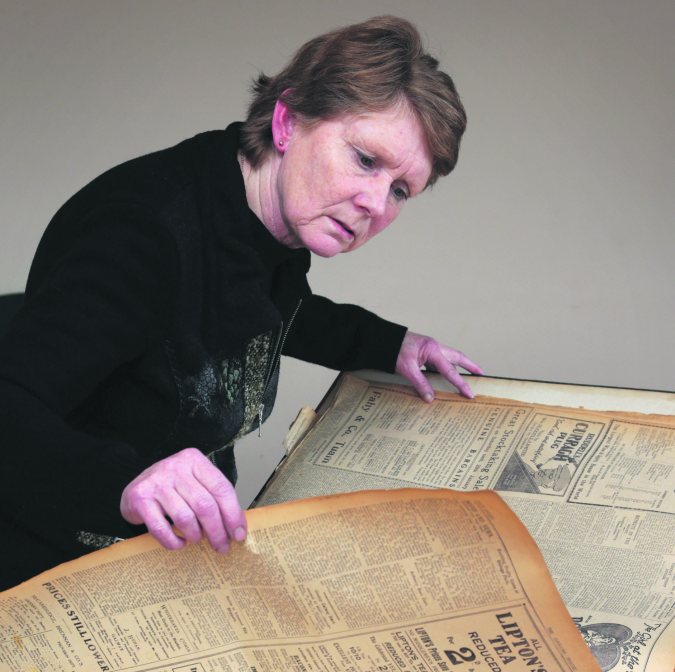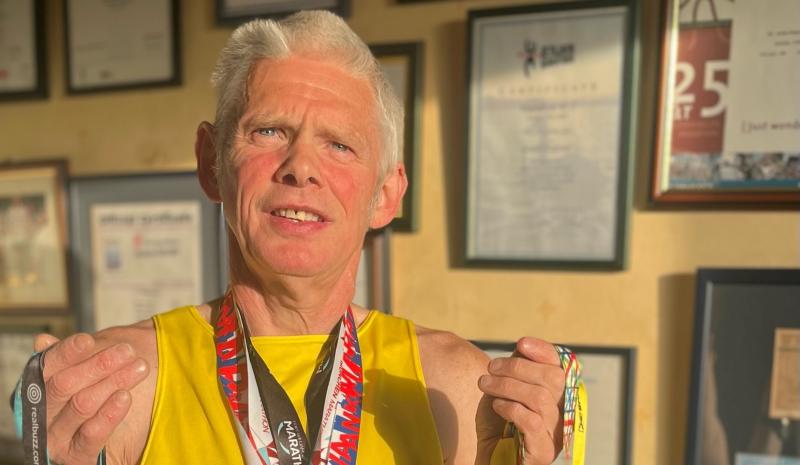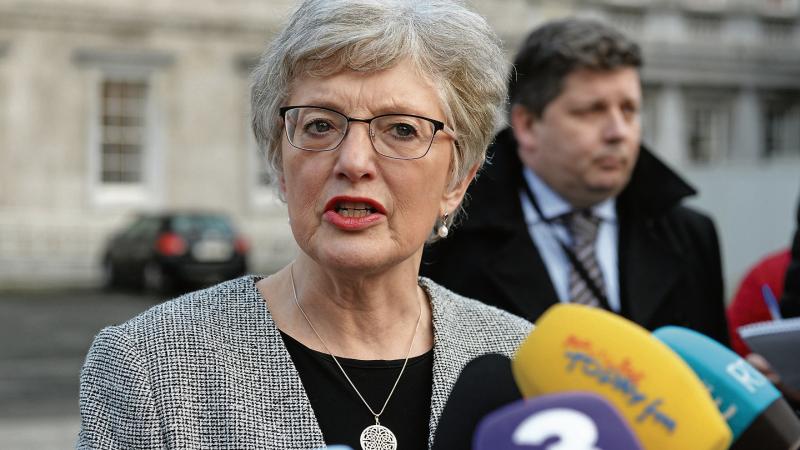News
Campaign to recognise 800 dead Tuam babies

Were it not for the tenacity of a housewife who has spent ten years researching her own family tree, the names of 798 children buried in an unmarked grave in Tuam would be lost for eternity.
Catherine Corless is on a quest to have the names of the children born to unmarried mothers in a home run by the Bons Secours nuns immortalised on a plaque which will serve not only as a guide to those in search of their lost family, but also as a spotlight into one of the darkest periods in Ireland’s history.
The project could well get international attention after journalist Martin Sixsmith filmed the graveyard last week as part of a new BBC documentary about mother and baby homes in Ireland. His story about Philomena Lee’s 50-year search for the son she was forced to adopt is the subject of an Oscar-nominated movie currently being shown in cinemas.
Catherine first learned of the unmarked graveyard when looking up records for the main graveyard on the Athenry Road.
“I was talking to people in the vicinity and someone said there’s a lisheen or plot for unbaptised babies across the road. I got a little hint it was something more than that so I went digging further,” reveals Catherine.
Surrounded on all sides by eight-foot walls, ‘The Home’ – officially called St Mary’s – was where women and girls from across Mayo and Galway would be sent to have babies out of wedlock between 1925 and 1961.
They would have their babies without pain relief, would be offered no stitches following the birth and were expected to work for a year in exchange for their confinement – all in the belief they must pay for their sins, according to Catherine.
“I got a day-to-day account of what life was like in the home from one lady who left there in 1956. When she first got there her job was to clean up after the one to three-year-olds who didn’t wear nappies and had constant green diarrhoea due to the bad diet. She said life was very harsh and the nuns were awfully strict.”
Babies and children were either adopted or fostered. Those who were not claimed by families were kept in the home until they made their first communion and were then transferred to other institutions. Catherine remembers the children coming into school.
“They were segregated and put to one side of the classroom. They were called the ‘home babies’ and we were told not to mind them. They came in ten minutes after us and left ten minutes earlier and we weren’t allowed to mix. People in the town remember the sound of the children marching down, they used to wear clogs in the winter and there would be a line of them with a minder in the front and back with a big stick.”
The home was knocked in 1972 to make way for the Dublin Road housing estate a half mile outside Tuam town.
In the corner of a green left in the middle of the estate, some children uncovered a big tank which had a collection of skulls and bones beneath a pile of rubble.
“I thought why would there be a crypt in the middle of nowhere. I went looking at old maps and found there was a septic tank marked on a 1891 map belonging to the home. The tank became defunct in 1938 when a new drainage scheme came into Tuam.
“It appears they made a crypt out of the old septic tank. I’d hope they’d have at least cleaned it out. It’s not nice to think about it.”
After consulting with the Civil Registrations Office, she made a shocking discovery. The unmarked grave was the final resting place to 798 dead children – among them infants just days old, many toddlers and children as old as eight. The cause of death was varied – from measles, gastroenteritis and various infections which would have spread easily in their dorm nurseries.
Most were buried only in shrouds and without coffins.
She spent €400 getting copies of their records, which included their names, dates of birth and the addresses of their mothers. She cross-checked with Galway County Council archivist Patricia McWalter to ensure they had not been claimed by families and buried elsewhere.
“These poor little things were just put down there. The saddest thing is to have that many children there who had nothing made of their lives when they were alive, here they are in death and there’s wilderness growing over them in an unmarked grave. It’s a scandal really.”
A local family, the Dooleys, took it upon themselves to get the county council to close the tank and put clay over it to create a kind of makeshift grave. They cut the grass, planted shrubs and roses and laid a small cross.
Catherine set up a committee a year ago to raise funds to erect a more permanent monument to the children.
They have plans to build a sculpture and a plaque bearing all their names, at a cost of €6,500. Tuam Town Council recently committed €2,000 to the project.
It was ten years ago when Catherine first dabbled in research while attempting to trace her own grandmother in Armagh. It became a pastime for the housewife from Brownsgrove after her own family were reared. Although she had no luck with her personal search, she has helped several other families reunite.
One Mayo man who was fostered from the home eventually traced his mother to Yorkshire. While she had passed away three years earlier, he found seven siblings and a whole new family he never knew he had.
She is helping another woman who is about to travel over from the UK to see her file being held by the Clann adoption service, a branch of the Health Service Executive (HSE). She is in contact with a woman whose brother was thought to have been adopted to an American family from the home.
“They deserve a bit of respect, they deserve to be remembered. If it’s not properly marked out it could become a dumping ground again. An injustice has been done to these poor little kids, it needs to be made right.”
Connacht Tribune
West has lower cancer survival rates than rest

Significant state investment is required to address ‘shocking’ inequalities that leave cancer patients in the West at greater risk of succumbing to the disease.
A meeting of Regional Health Forum West heard that survival rates for breast, lung and colorectal cancers than the national average, and with the most deprived quintile of the population, the West’s residents faced poorer outcomes from a cancer diagnosis.
For breast cancer patients, the five-year survival rate was 80% in the West versus 85% nationally; for lung cancer patients it was 16.7% in the west against a 19.5% national survival rate; and in the West’s colorectal cancer patients, there was a 62.6% survival rate where the national average was 63.1%.
These startling statistics were provided in answer to a question from Ballinasloe-based Cllr Evelyn Parsons (Ind) who said it was yet another reminder that cancer treatment infrastructure in the West was in dire need of improvement.
“The situation is pretty stark. In the Western Regional Health Forum area, we have the highest incidence of deprivation and the highest health inequalities because of that – we have the highest incidences of cancer nationally because of that,” said Cllr Parsons, who is also a general practitioner.
In details provided by CEO of Saolta Health Care Group, which operates Galway’s hospitals, it was stated that a number of factors were impacting on patient outcomes.
Get the full story in this week’s Connacht Tribune, on sale in shops now, or you can download the digital edition from www.connachttribune.ie. You can also download our Connacht Tribune App from Apple’s App Store or get the Android Version from Google Play.
Connacht Tribune
Marathon Man plans to call a halt – but not before he hits 160 races

On the eve of completing his 150th marathon, an odyssey that has taken him across 53 countries, Loughrea’s Marathon Man has announced that he is planning to hang up his running shoes.
But not before Jarlath Fitzgerald completes another ten races, making it 160 marathons on the occasion of his 60th birthday.
“I want to draw the line in 2026. I turn 57 in October and when I reach 60 it’s the finishing line. The longer races are taking it out of me. I did 20 miles there two weeks ago and didn’t feel good. It’s getting harder,” he reveals.
“I’ve arthritis in both hips and there’s wear and tear in the knees.”
We speak as he is about to head out for a run before his shift in Supervalu Loughrea. Despite his physical complaints, he still clocks up 30 miles every second week and generally runs four days a week.
Jarlath receives injections to his left hip to keep the pain at bay while running on the road.
To give his joints a break, during the winter he runs cross country and often does a five-mile trek around Kylebrack Wood.
He is planning on running his 150th marathon in Cork on June 4, where a group of 20 made up of work colleagues, friends and running mates from Loughrea Athletics Club will join him.
Some are doing the 10k, others are doing the half marathon, but all will be there on the finishing line to cheer him on in the phenomenal achievement.
Get the full story in this week’s Connacht Tribune, on sale in shops now, or you can download the digital edition from www.connachttribune.ie. You can also download our Connacht Tribune App from Apple’s App Store or get the Android Version from Google Play.
CITY TRIBUNE
Galway ‘masterplan’ needed to tackle housing and transport crises

From the Galway City Tribune – An impassioned plea for a ‘masterplan’ that would guide Galway City into the future has been made in the Dáil. Galway West TD Catherine Connolly stated this week that there needed to be an all-inclusive approach with “vision and leadership” in order to build a sustainable city.
Deputy Connolly spoke at length at the crisis surrounding traffic and housing in Galway city and said that not all of the blame could be laid at the door of the local authority.
She said that her preference would be the provision of light rail as the main form of public transport, but that this would have to be driven by the government.
“I sat on the local council for 17 years and despaired at all of the solutions going down one road, metaphorically and literally. In 2005 we put Park & Ride into the development plan, but that has not been rolled out. A 2016 transport strategy was outdated at the time and still has not been updated.
“Due to the housing crisis in the city, a task force was set up in 2019. Not a single report or analysis has been published on the cause of the crisis,” added Deputy Connolly.
She then referred to a report from the Land Development Agency (LDA) that identified lands suitable for the provision of housing. But she said that two-thirds of these had significant problems and a large portion was in Merlin Park University Hospital which, she said, would never have housing built on it.
In response, Minister Simon Harris spoke of the continuing job investment in the city and also in higher education, which is his portfolio.
But turning his attention to traffic congestion, he accepted that there were “real issues” when it came to transport, mobility and accessibility around Galway.
“We share the view that we need a Park & Ride facility and I understand there are also Bus Connects plans.
“I also suggest that the City Council reflect on her comments. I am proud to be in a Government that is providing unparalleled levels of investment to local authorities and unparalleled opportunities for local authorities to draw down,” he said.
Then Minister Harris referred to the controversial Galway City Outer Ring Road which he said was “struck down by An Bord Pleanála”, despite a lot of energy having been put into that project.
However, Deputy Connolly picked up on this and pointed out that An Bord Pleanála did not say ‘No’ to the ring road.
“The High Court said ‘No’ to the ring road because An Bord Pleanála acknowledged it failed utterly to consider climate change and our climate change obligations.
“That tells us something about An Bord Pleanála and the management that submitted such a plan.”
In the end, Minister Harris agreed that there needed to be a masterplan for Galway City.
“I suggest it is for the local authority to come up with a vision and then work with the Government to try to fund and implement that.”












